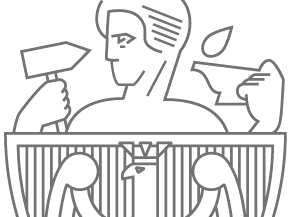Strona główna » DAAS » Research » Projects »
SEA-AHED – Simulation Environment and Advisory System for On-board Help, and Estimation of Manoeuvring Performance During Design
Large ships have a very great inertia. The time they take to respond to a manoeuvring action (rudder angle, thruster power, rpm, etc.) is a frustratingly long one. Furthermore, during all that intervening time ships keep being affected in very complex ways by large numbers of external factors (the wind speed, its direction, prevailing currents etc.). The art of manoeuvring a ship, particularly in restricted waters is thus a very difficult one involving as it does the mental ability of predicting accurately in real-time the motion of a very large vessel subject to external actions. Though errors can be potentially devastating (particularly with passenger ships), once a course of action has been committed to, very little can be done to change it even if the pilot realises (too late) that he has made a mistake. Safety of the passengers and ship makes it essential that the pilot be given at all times the best possible information regarding the consequences of his manoeuvring actions; it also demands that he be automatically alerted with all speed in case of looming hazards.
The purpose of SEA-AHED was threefold. First, it aimed at creating systems that would enable shipyards and shipowners to assess the manoeuvring characteristics of vessels at an early stage of design, thus enabling any potential manoeuvring difficulties to be dealt with at an early stage. Secondly SEA-AHED was to develop a navigational aid displaying in real-time the vessels current position together with a future position predicted or simulated on the basis of current vessel rudder angles, rpm, thruster powers, wind speed and direction etc. and capable of advising the pilot of potential hazards. Finally, SEA-AHED developed a manoeuvring training aid that would allow crews to replay previous manoeuvres and demonstrate the effects of alternate actions on the basis of real environmental information.
SEA-AHED aimed at producing a system that could more accurately predict the course of cruise ships that any current commercial product. It accomplished this by considering the non-linear and time-varying manoeuvring characteristics of the vessel, taking account of wind speed, wind direction, water depth, currents, actual rudder angles, demanded rudder angles, thruster performances etc. Until SEAHED was created, the state-of-the-art systems generally relied on constant rate models that do not provide the accuracy necessary for safe operation. The developed system exploits very recent technique called the Julier-Ulhmann filter. For the non-linear models under consideration this should out perform the industry standard extended Kalman Filter. The parameters of the mathematical model of vessel are automatically updated in service using the Julier-Uhlmann filter.
The main project outputs, which are mostly software based, are a design tool for assessing manoeuvring characteristics of vessels at an early stage of design, a navigational aid which advises the pilot of potential hazards, and a manoeuvring training aid for crews during normal sailing.
SEA-AHED was an RTD project that fitted into the concerns of the "Promoting Competitive and Sustainable Growth” programme’s key Action 3 “Land Transport and Marine Technologies”. Besides Warsaw University of Technology, SEAHED involved 6 partners from 3 EU countries. They were a major passenger ship owner, a large European shipyard leading the world in cruise ship design and production, a supplier of shipboard navigational systems, a supplier of manoeuvring simulators, and a major maritime industrial research organization. The coordinator of SEAHED was Rory Doyle (BMT) and local coordinator was prof. Janusz Narkiewicz (WUT).
Super-cruisers are capable of carrying 4000 plus people. A collision has the potential to produce unprecedented carnage. The SEA-AHED tools have the ability to significantly reduce the risk of this happening. They contribute directly to the safety through on-board training, providing a situational awareness, and even predicting the behaviour of the vessel in situations where some machinery fails.

